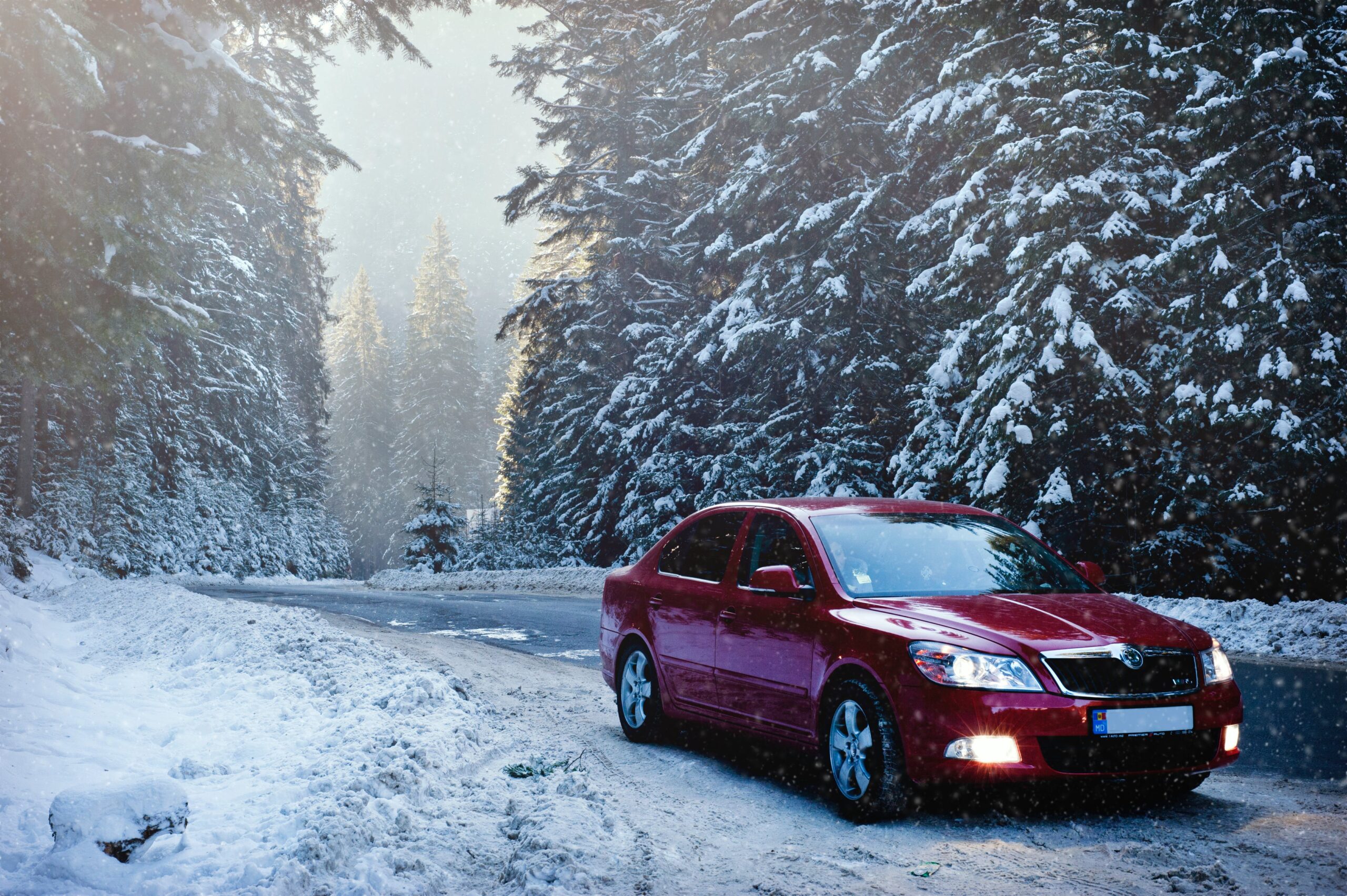
Safe Travel In Icy Conditions: The Key Considerations
As winter blankets the roads with a layer of frost and ice, ensuring your car runs smoothly becomes paramount for a safe and stress-free driving experience.
In this guide, we’ll explore essential tips and strategies to keep your car in top-notch condition during the chilly winter months, and then give some tips on safe driving in winter weather to help you get from A to B in one piece.
- Cold-Weather Fluid Check
Fluids are the lifeblood of your car, and in icy conditions, their importance is magnified. Ensure that your engine oil, transmission fluid, brake fluid, and coolant are at the recommended levels.
Cold temperatures can cause fluids to thicken, affecting their ability to lubricate and protect vital components. Using winter-grade oil and other cold-resistant fluids can enhance your vehicle’s performance in frigid conditions.
- Battery Health
Cold weather can be particularly harsh on car batteries, as it reduces their efficiency. Before winter sets in, have your battery tested to ensure it’s in good condition. If the battery is old or weak, consider replacing it.
Clean the battery terminals and connections regularly to prevent corrosion, which can hamper the flow of electricity. Carrying jumper cables in your vehicle is also a wise precaution in case of unexpected battery issues.
- Tyre Maintenance
Tyres are your first line of defence against icy roads, making their maintenance crucial. Check the tyre pressure regularly, as cold temperatures can cause pressure to drop. Invest in winter tyres with adequate tread depth for improved traction on icy surfaces.
Consider using tyre chains if you live in an area with heavy snowfall. Rotating your tyres at regular intervals ensures even wear and prolongs their lifespan, contributing to overall safety and performance.
- Brake Inspection And Maintenance
Brakes play a pivotal role in your safety, especially in icy conditions where stopping distances can be longer. Regularly inspect the brake pads, discs, and callipers for wear and tear. Ensure that the brake fluid is at the recommended level and that there are no leaks.
If you notice any unusual sounds or sensations while braking, have your brakes checked by a professional promptly, as well-maintained brakes are essential for safe winter driving.
- Wiper Blades And Fluid
Visibility is key in winter driving, and maintaining clear windshields is a top priority. Check your wiper blades for wear and replace them if necessary. Fill up the windshield washer fluid reservoir with a winter-grade solution that won’t freeze in low temperatures.
Keeping your windshield and rear window clear of ice and snow enhances visibility and contributes to safer driving.
- Heating And Defrosting System
A functional heating and defrosting system is essential for driver comfort and safety during winter. Test your vehicle’s heater to ensure it warms up quickly and produces sufficient heat.
Check the defrosting system to make sure it effectively clears frost and ice from the windows. If you notice any issues, have your heating system inspected and repaired by a professional.
- Check Lights And Electrical Systems
Winter days are shorter, and visibility is often compromised by snow and fog. Ensure that all your vehicle lights are in working order, including headlights, brake lights, turn signals, and hazard lights.
Test the battery and charging system to avoid unexpected electrical failures. Regularly inspect and replace any blown fuses to prevent electrical issues that could leave you stranded in the cold.
- Carry A Winter Emergency Kit
Despite all precautions, emergencies can still occur. Equip your vehicle with a winter emergency kit that includes essentials such as a blanket, extra warm clothing, non-perishable snacks, a flashlight, and a first aid kit.
Additionally, carry tools like an ice scraper, snow brush, and tyre chains for added preparedness.
Navigating The Winter Roads
Now we’ve outlined how to ensure your vehicle is fit to hit the frosty streets, let’s look at some key strategies to drive safely in icy conditions, making your winter journeys smooth and secure.
- Slow And Steady Wins the Race
One of the cardinal rules of driving on icy roads is to reduce your speed. Slow down to match the conditions, and give yourself ample time to react to any unforeseen obstacles.
Avoid sudden movements such as sharp turns, quick accelerations, or abrupt braking. Gentle, gradual actions are the key to maintaining control on slippery surfaces.
- Increase Following Distance
Maintaining a safe following distance is crucial in icy conditions. Increase the gap between your vehicle and the one in front of you to allow for extended braking distances. This extra space provides a buffer in case you need to react quickly to changes in traffic or road conditions.
- Use Proper Lighting
Visibility is often compromised in winter weather, with reduced daylight hours and snowfall. Ensure that all your vehicle lights are in working order, including headlights, brake lights, and turn signals.
Use your headlights even during the day to increase visibility for yourself and other drivers. Keep your windshield, mirrors, and lights clean to minimize glare and improve overall visibility.
- Master The Art Of Braking
Braking on icy roads requires finesse. Instead of slamming on the brakes, practice gentle and steady pressure to avoid skidding. If your vehicle is equipped with an anti-lock braking system (ABS), understand how to use it effectively.
In the event of a skid, steer in the direction you want to go and avoid overcompensating. Learning how to modulate your brakes and steering inputs is essential for mastering winter driving.
- Stay Informed About Weather Conditions
Stay abreast of weather forecasts before heading out, especially during winter. Knowing the expected conditions can help you plan your journey accordingly, and if necessary, postpone your trip if severe weather is anticipated.
Additionally, be aware of any road closures or advisories in your route and have alternative routes in mind.
- Equip Yourself For Emergencies
Despite all precautions, emergencies can still happen. Be prepared by carrying a winter emergency kit in your vehicle. This kit should include essentials such as a blanket, extra warm clothing, non-perishable snacks, a flashlight, and a first aid kit.
Also, ensure your mobile phone is charged and have a car charger with you.
- Know When To Stay Home
Sometimes the best decision is not to drive at all! If the weather is extremely treacherous, consider staying home and avoiding unnecessary risks.
Safety should always be the top priority, and sometimes the most responsible choice is to wait until road conditions improve.
Don’t Let Winter Drive You Crazy
Driving in icy conditions demands a combination of preparedness, caution, and adaptability. By taking the necessary precautions, staying informed, and adopting a mindful driving approach, you can navigate winter roads with confidence.
But remember, it’s not just about reaching your destination; it’s about getting there safely!



